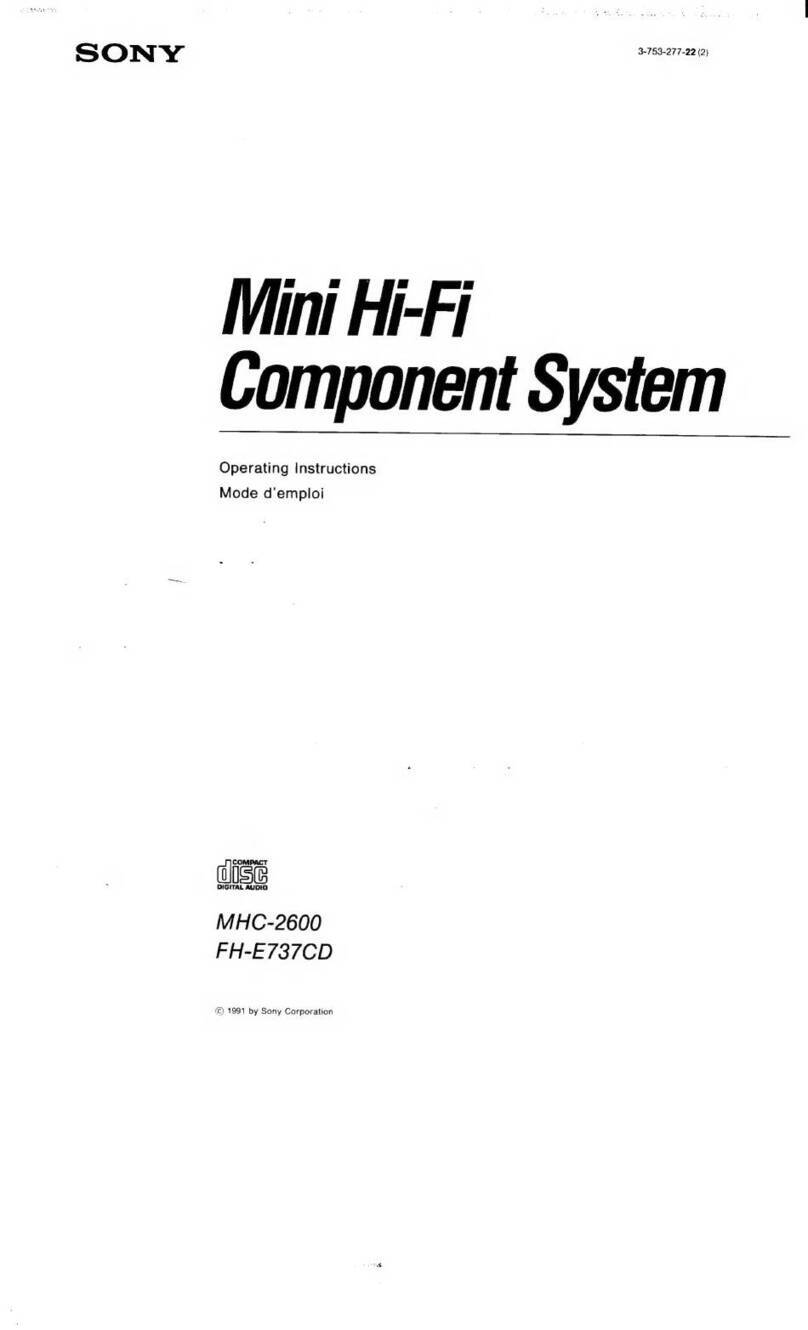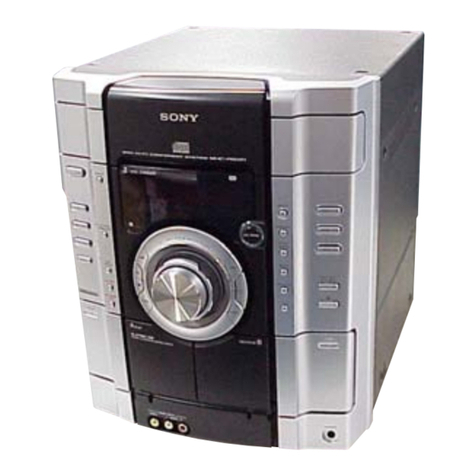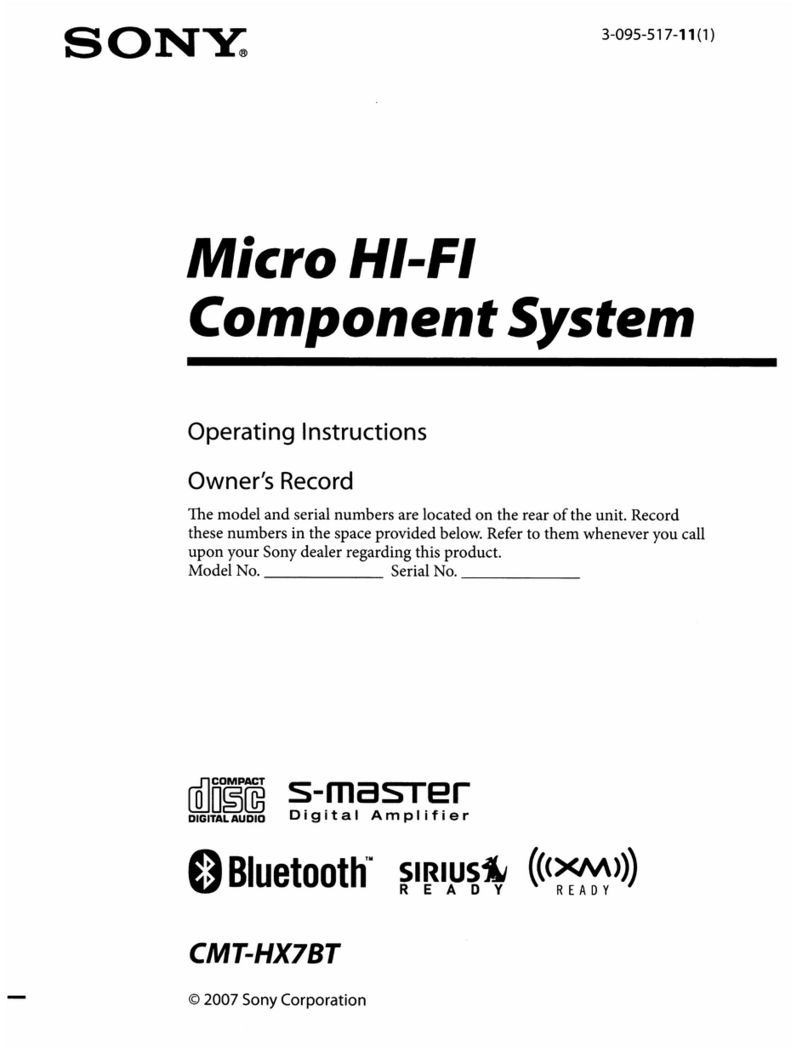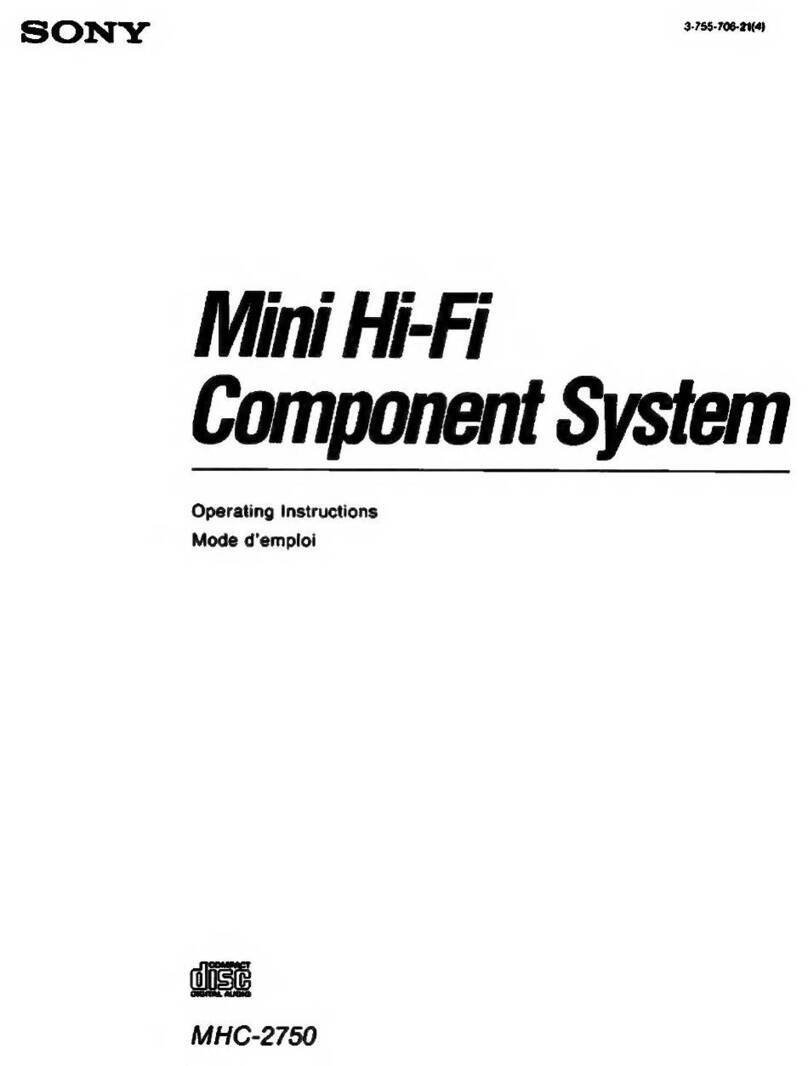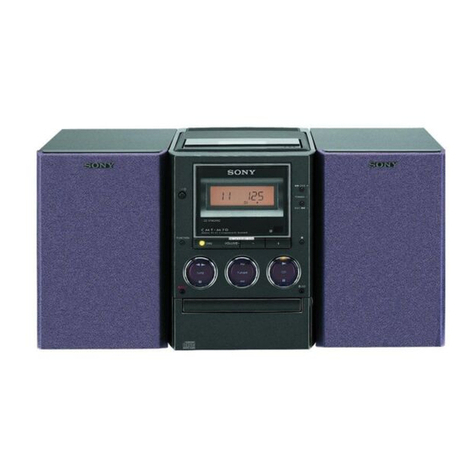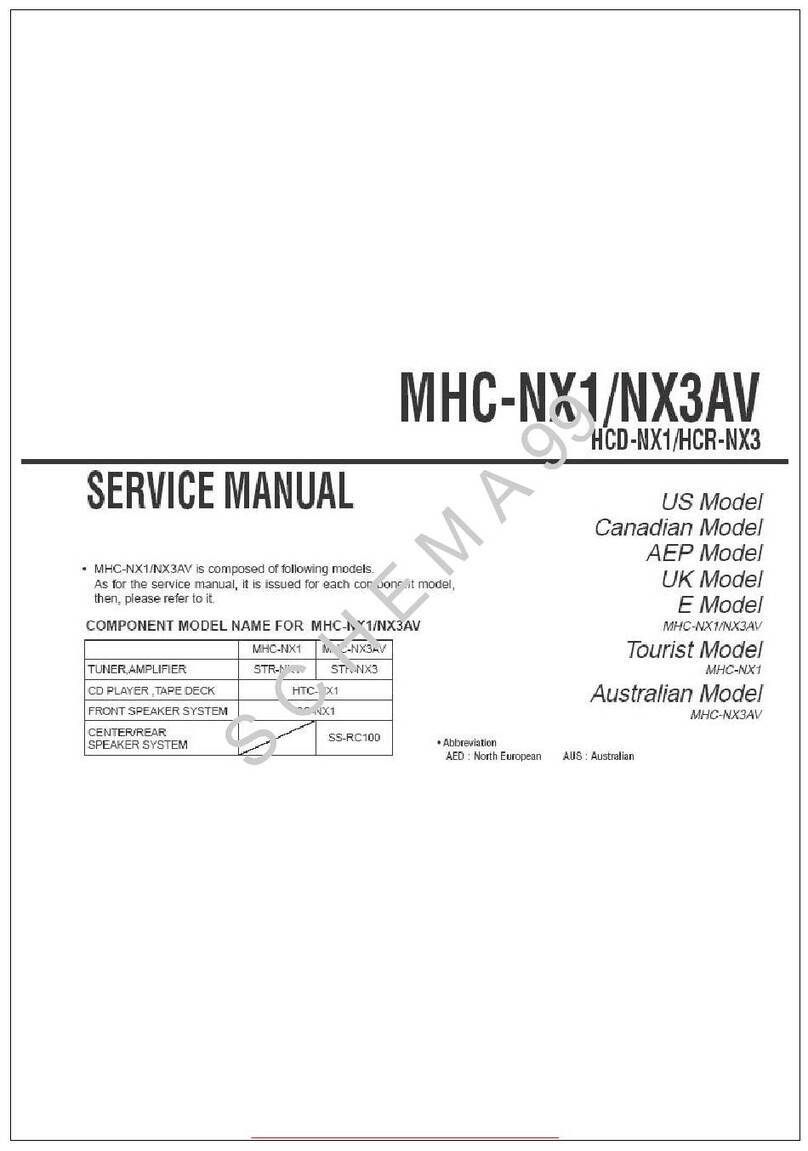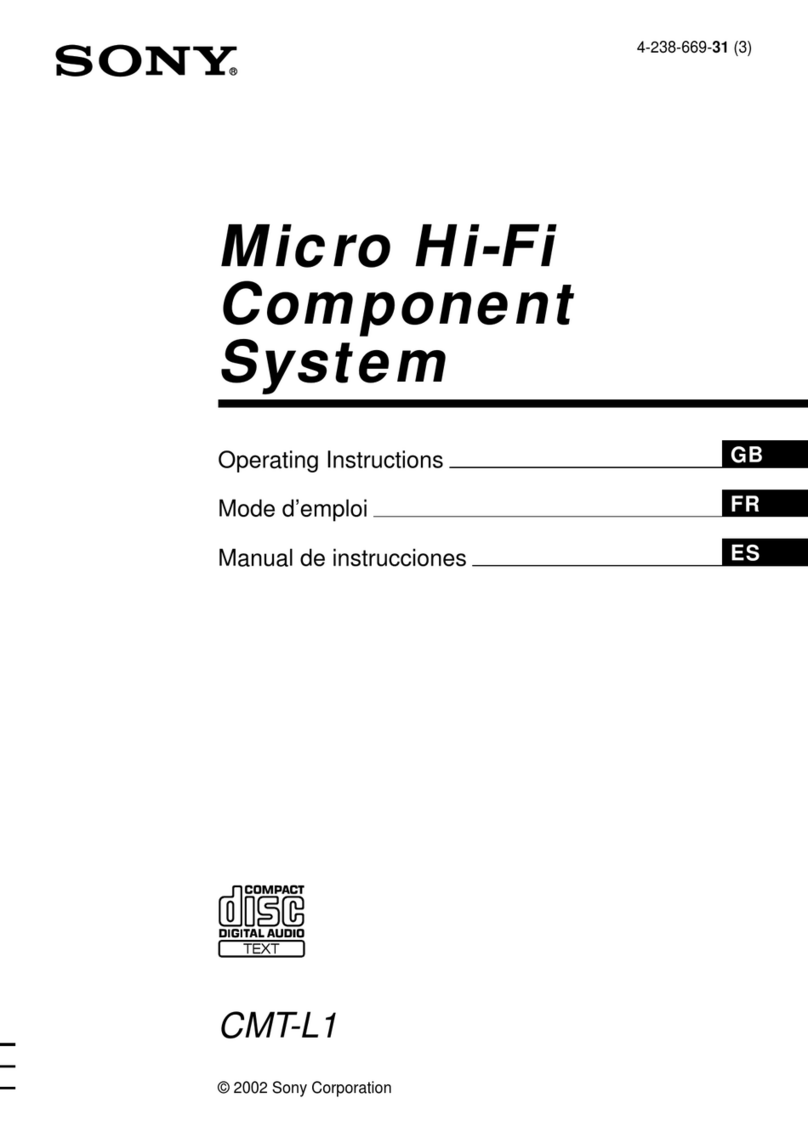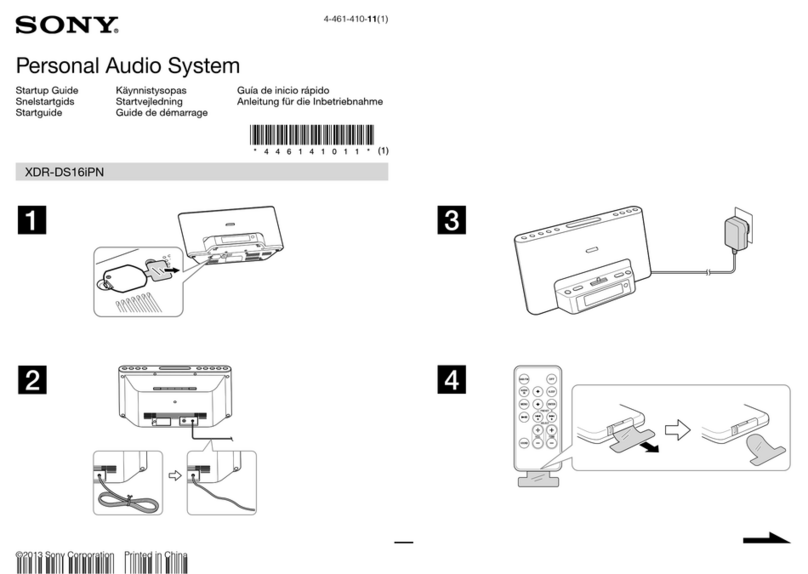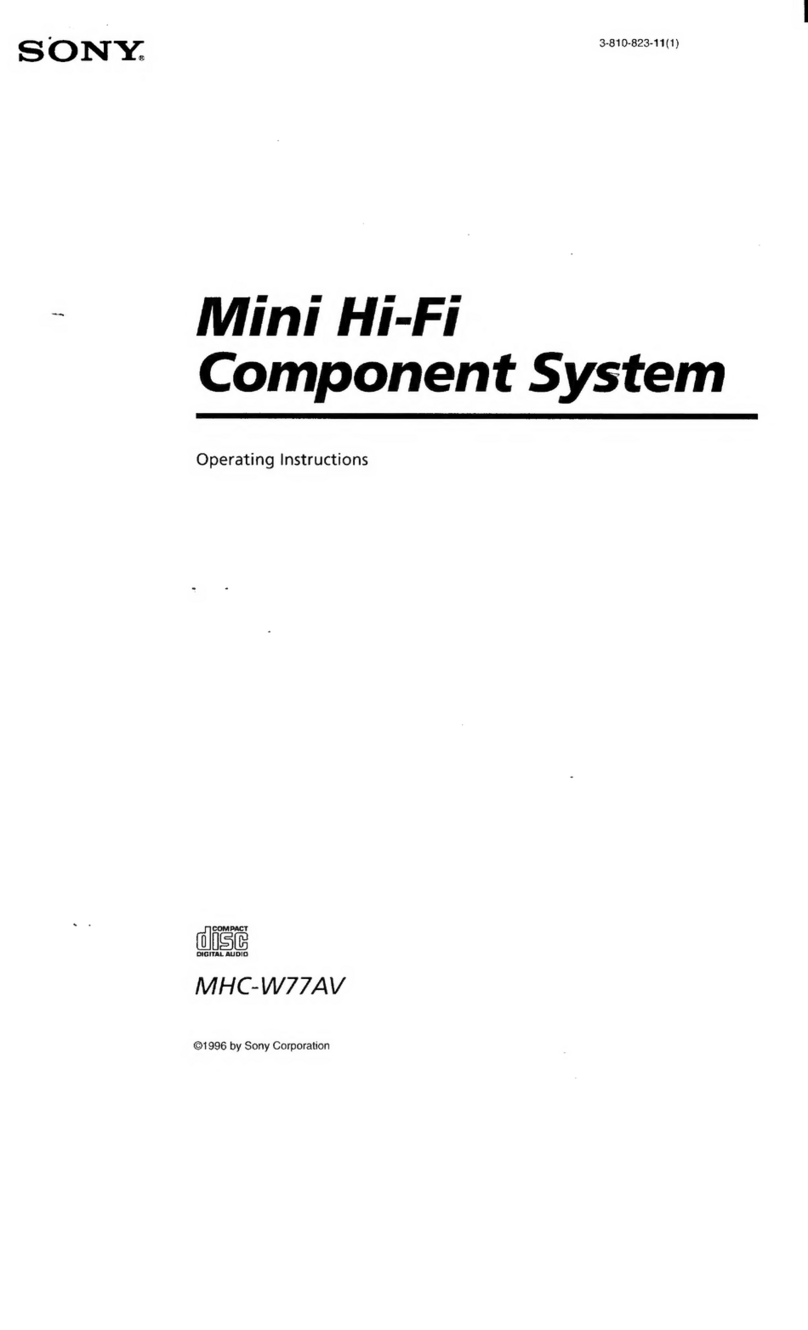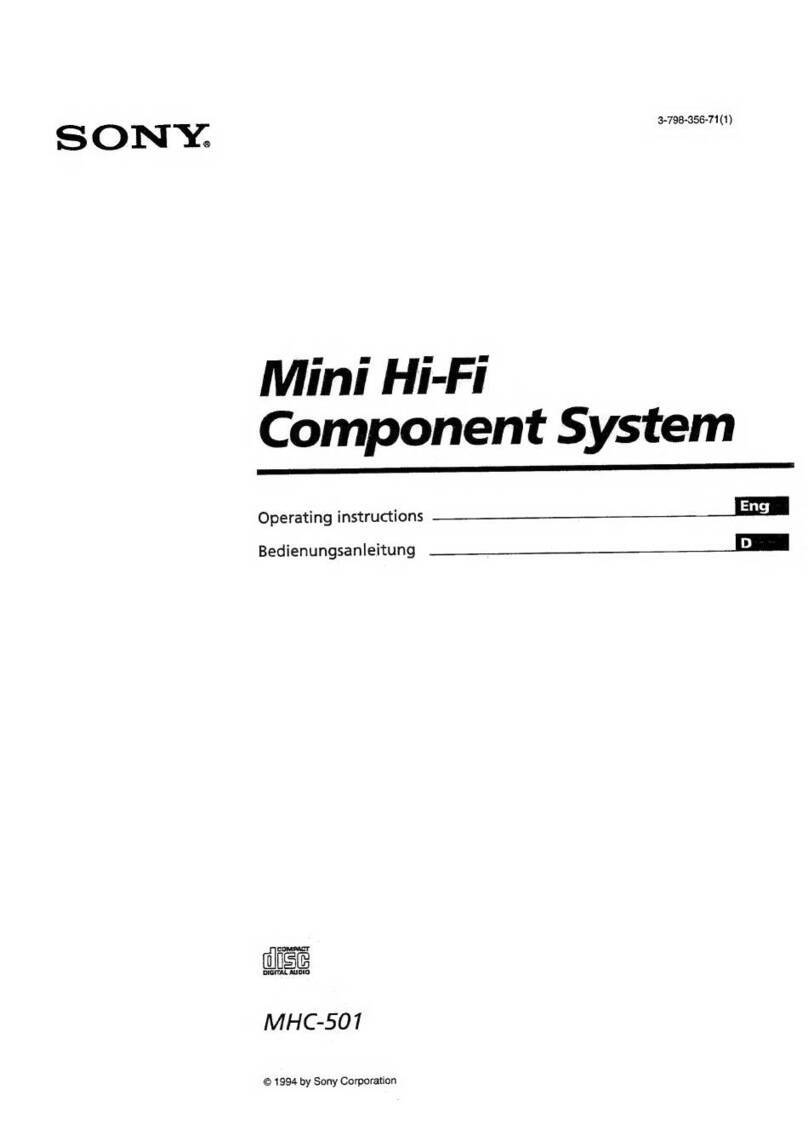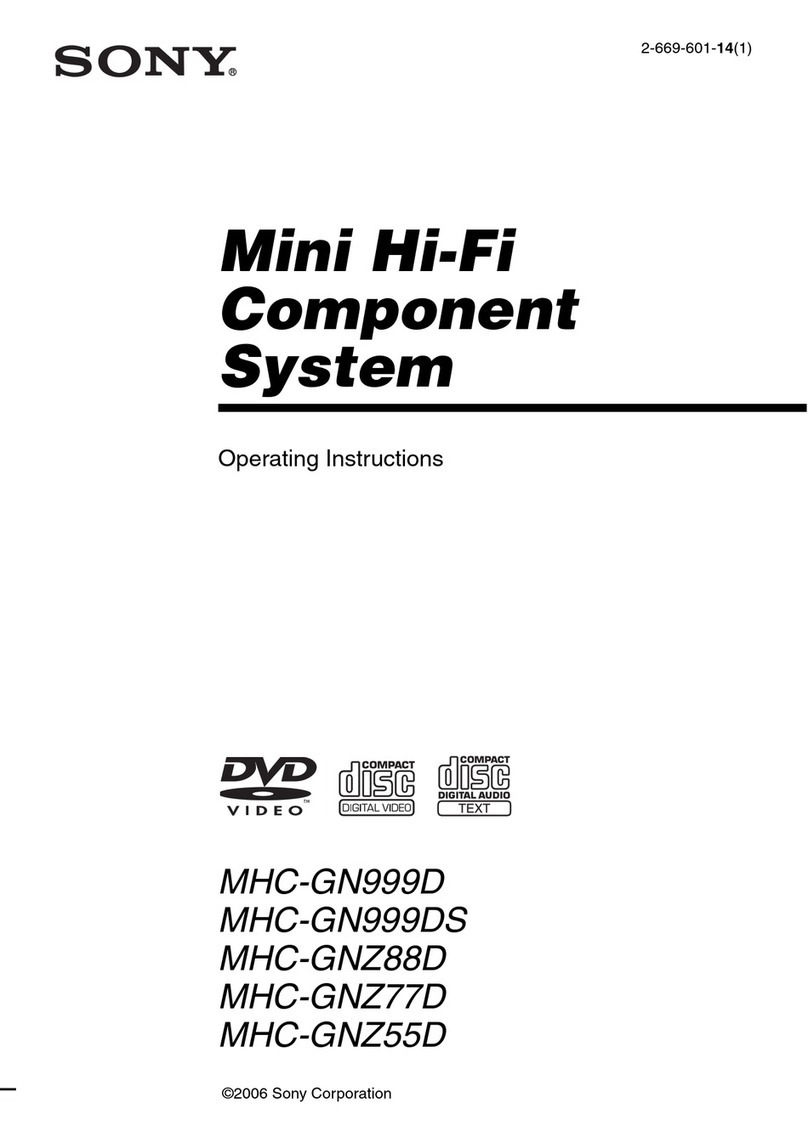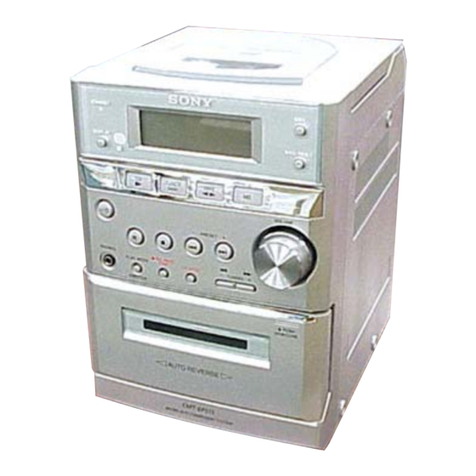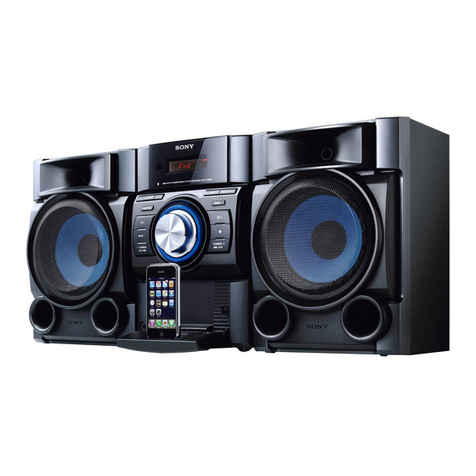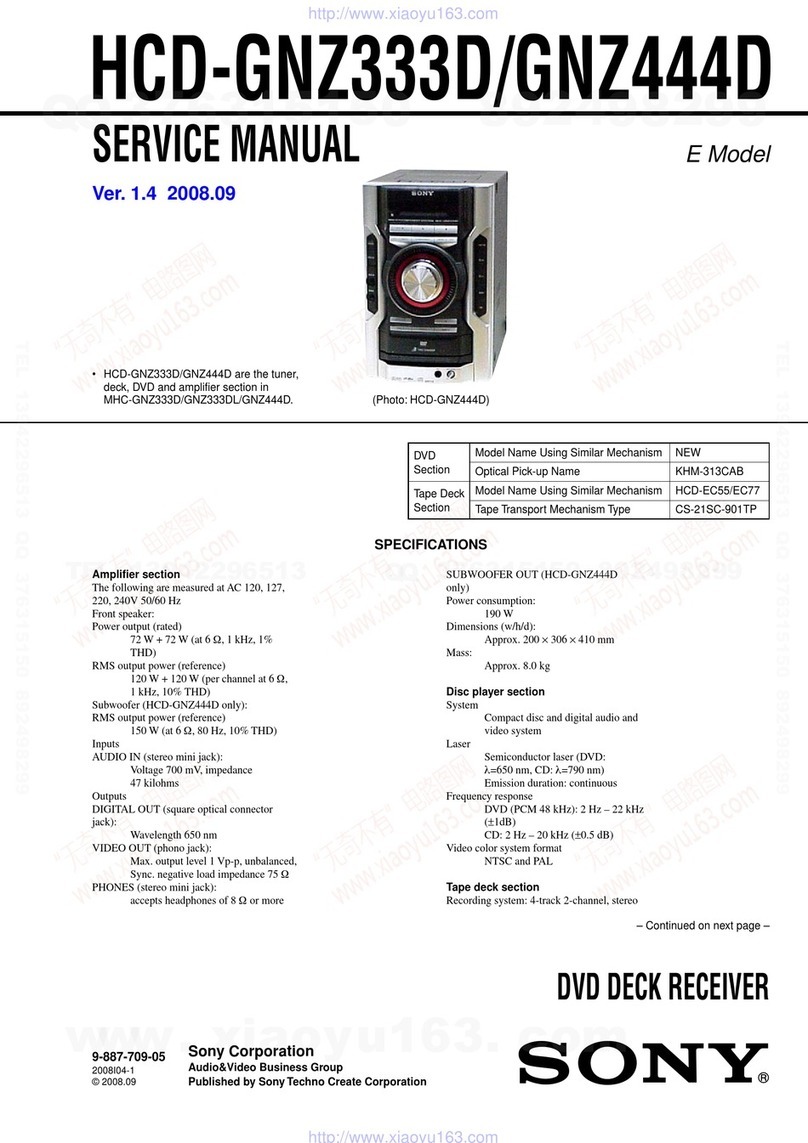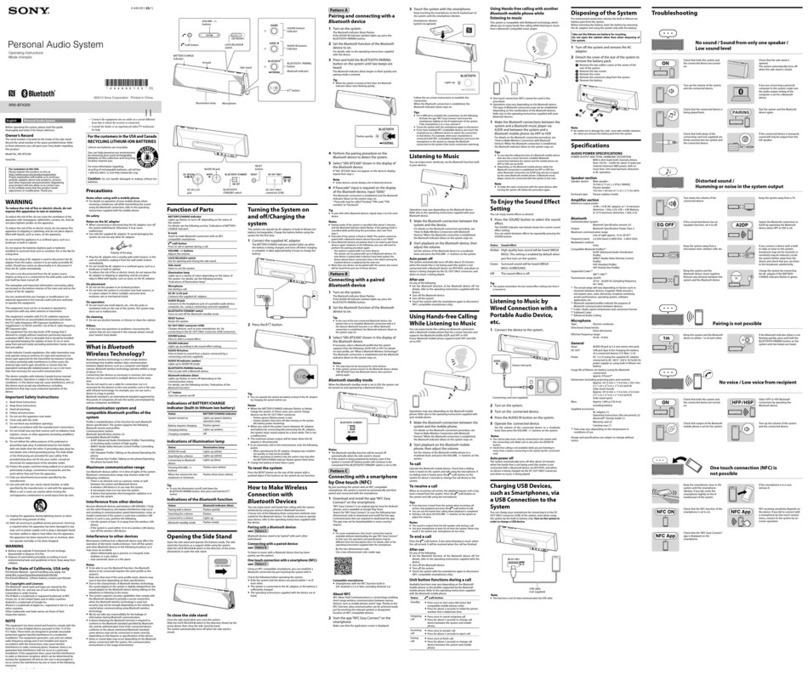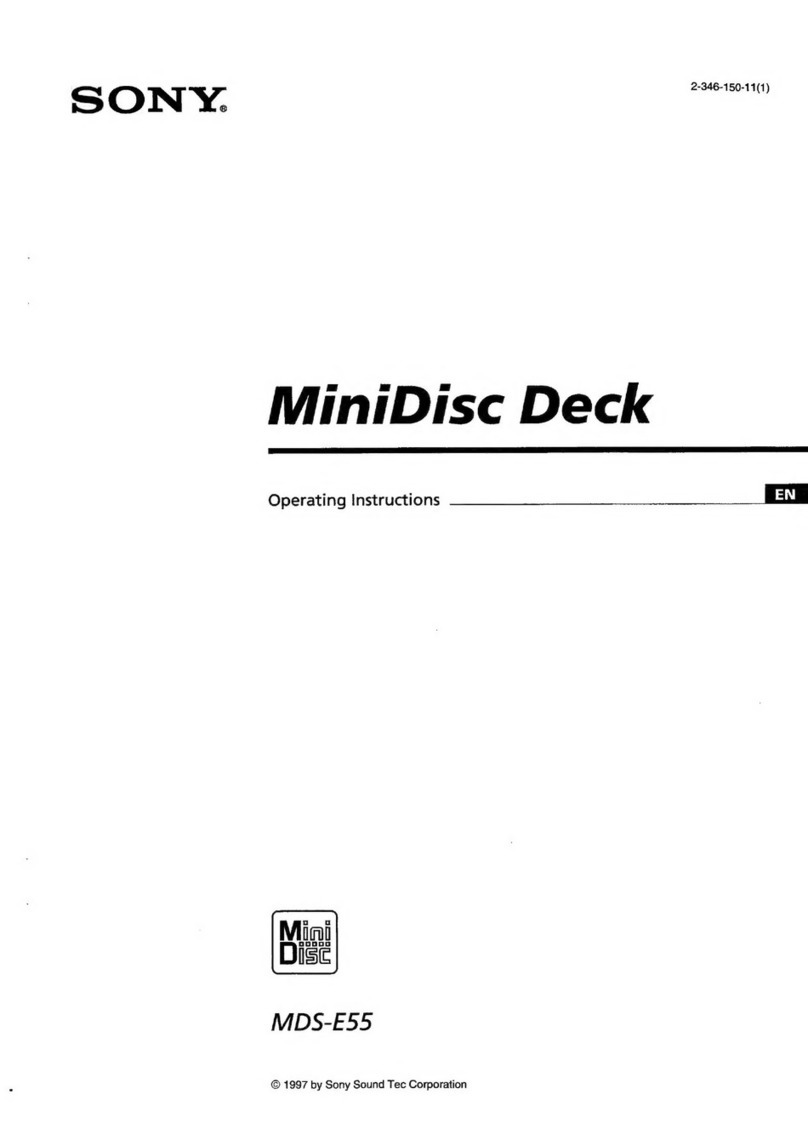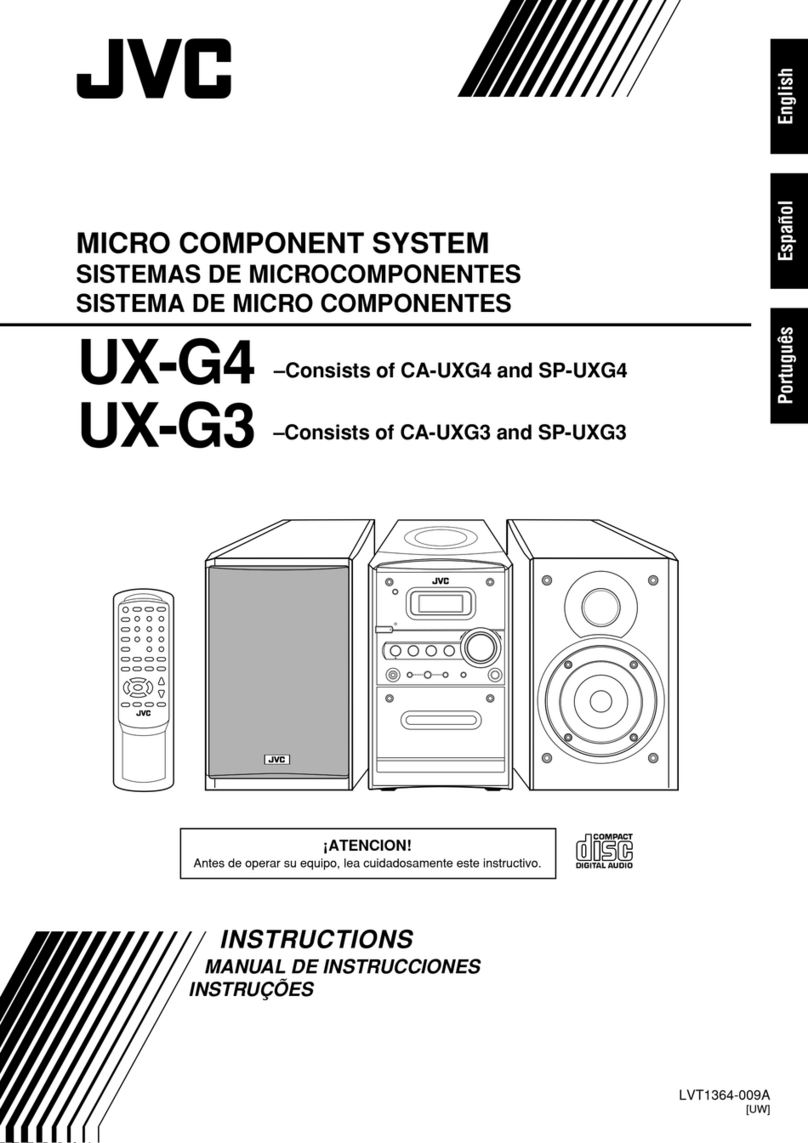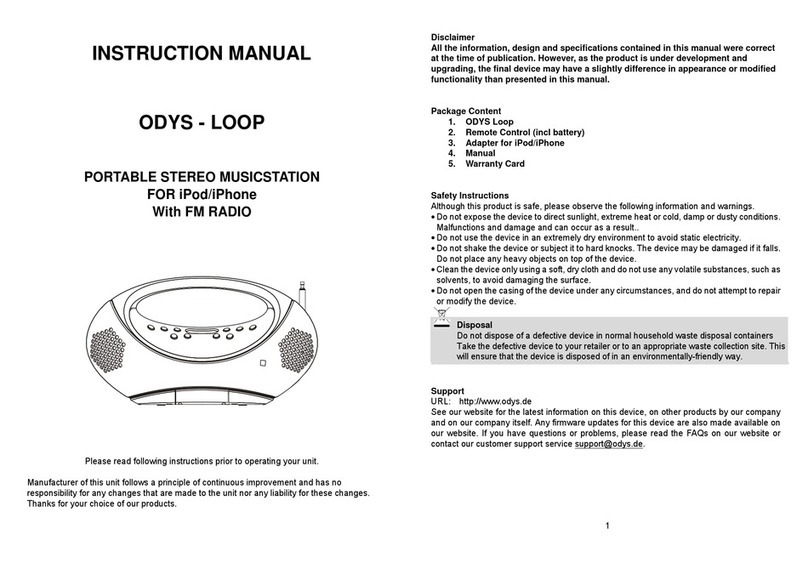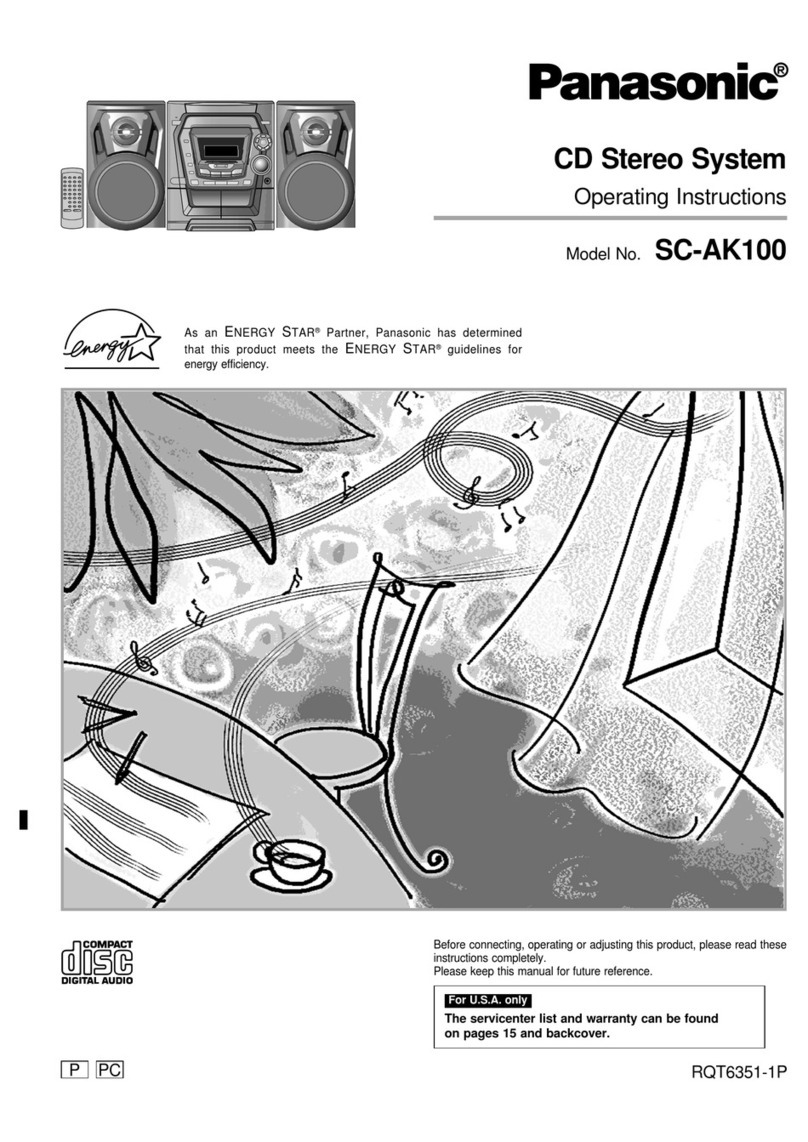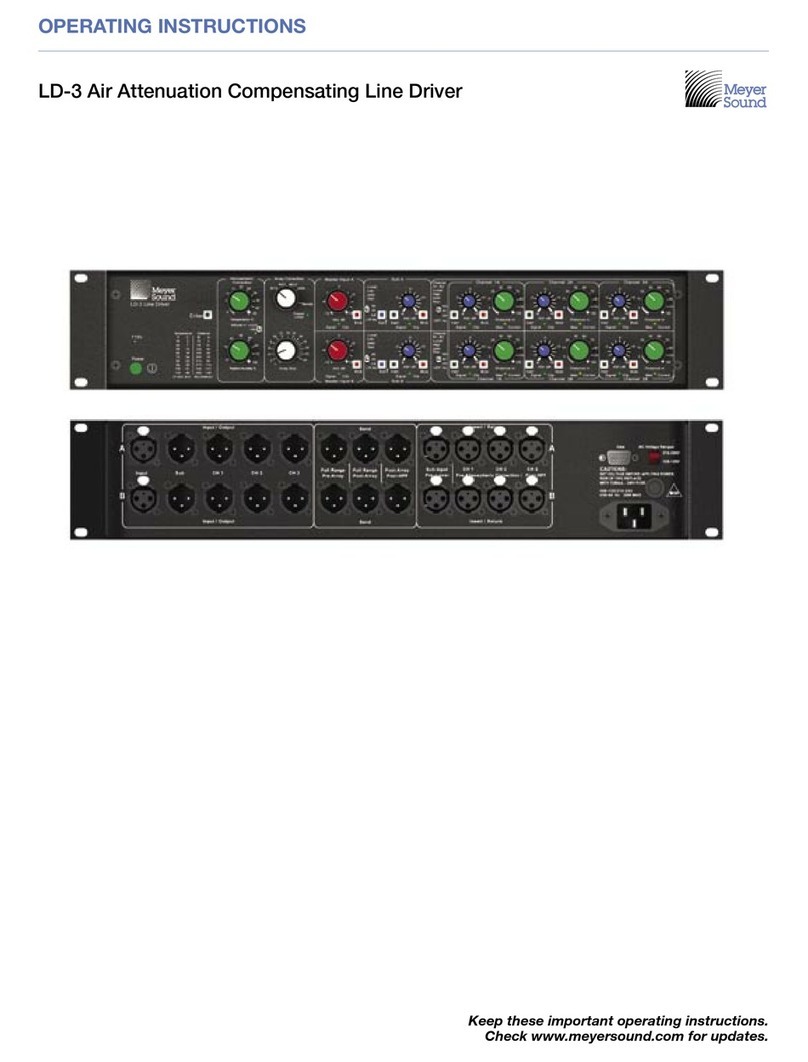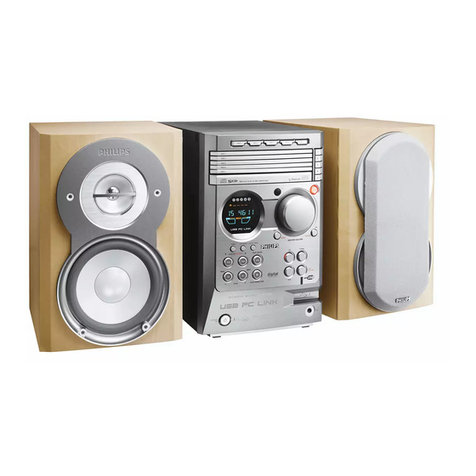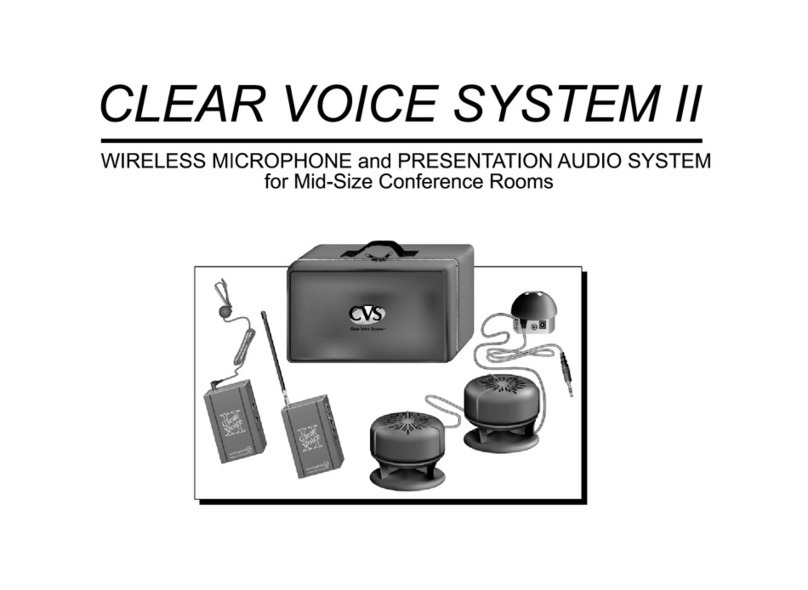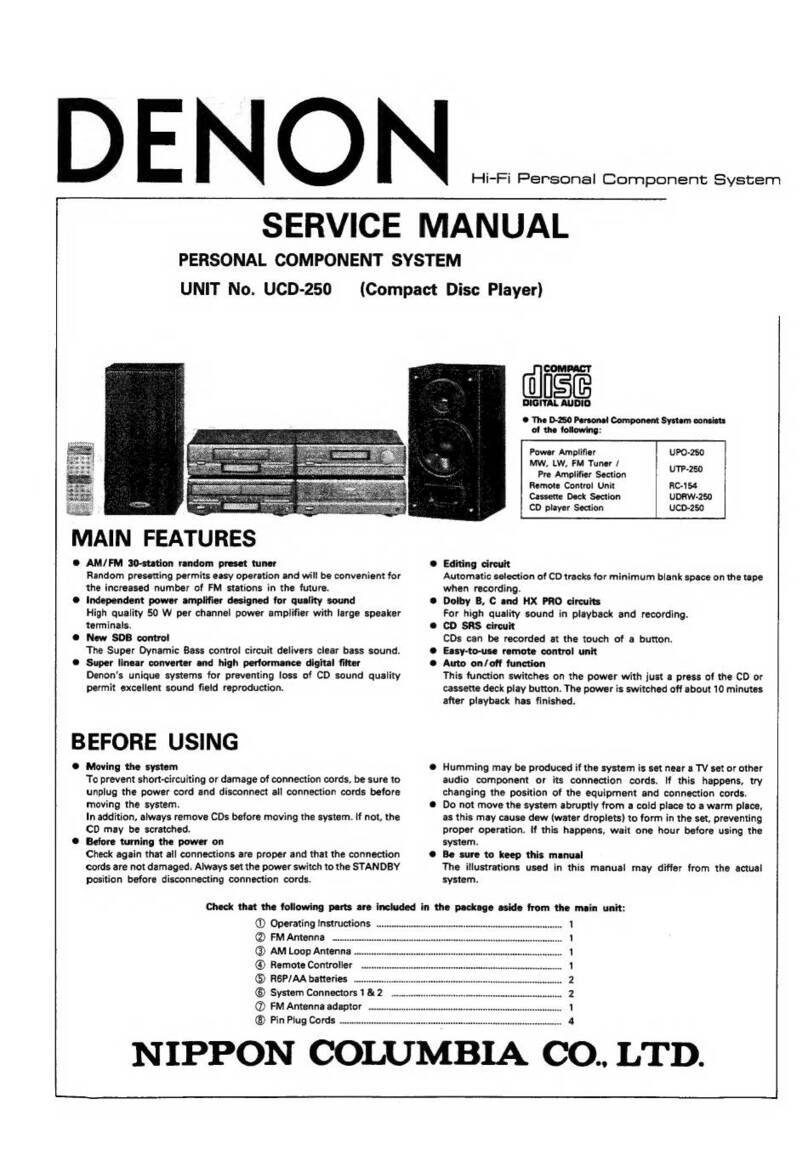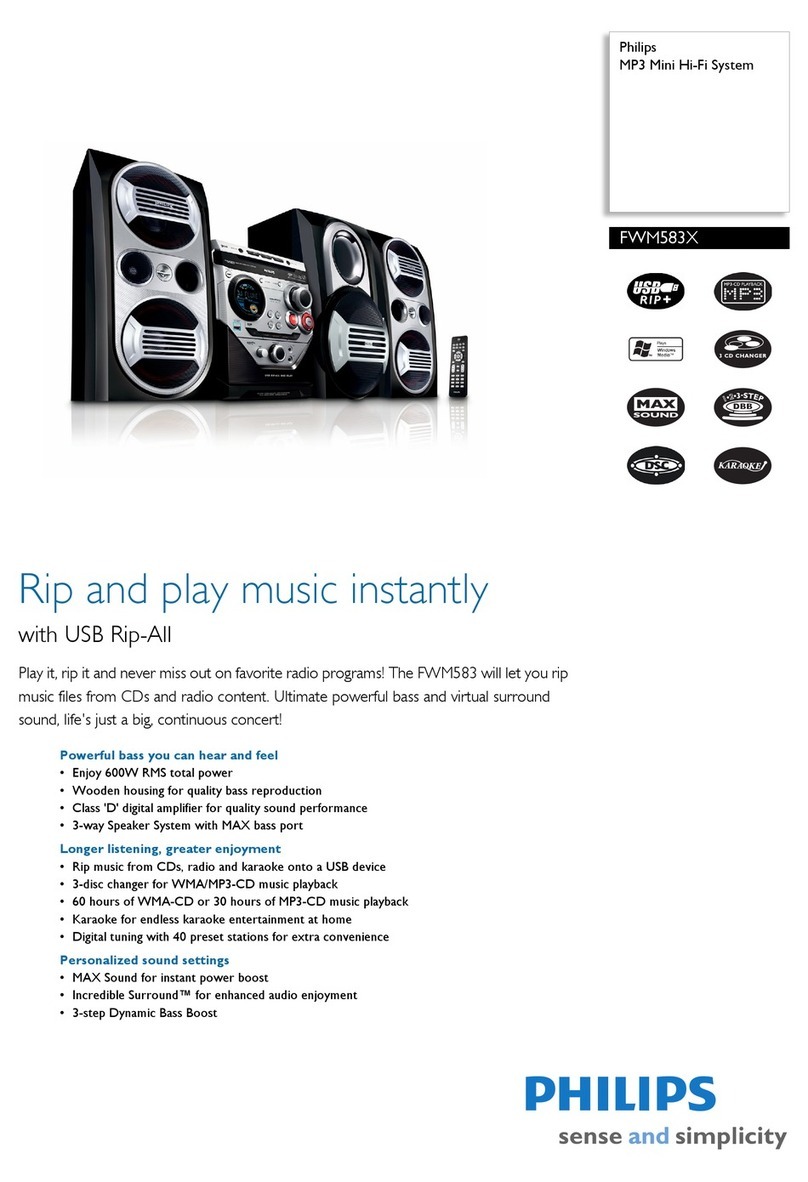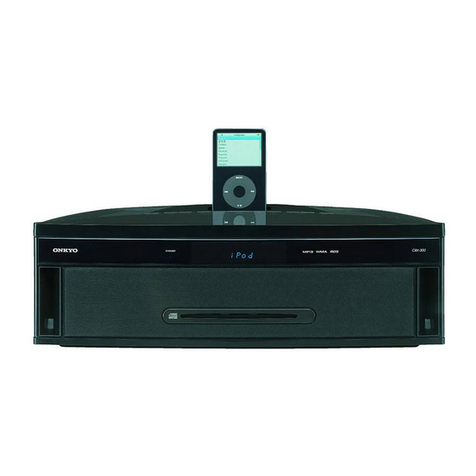
— 4 —
SERVICING NOTES
The laser diode in the optical pick-up block may suffer electrostatic
break-down because of the potential difference generated by the
charged electrostatic load, etc. on clothing and the human body.
During repair, pay attention to electrostatic break-down and also
use the procedure in the printed matter which is included in the
repair parts.
The flexible board is easily damaged and should be handled with
care.
NOTES ON LASER DIODE EMISSION CHECK
The laser beam on this model is concentrated so as to be focused on
the disc reflective surface by the objective lens in the optical pick-
up block. Therefore, when checking the laser diode emission,
observe from more than 30 cm away from the objective lens.
MODEL IDENTIFICATION
– BACK PANEL –
NOTES ON HANDLING THE OPTICAL PICK-UP
BLOCK OR BASE UNIT
TABLE OF CONTENTS
1. GENERAL
– FRONT PANEL – ···························································· 5
– BACK PANEL – ······························································ 6
2. DISASSEMBLY ····························································· 8
3. TEST MODE ··································································· 16
4. MECHANICAL ADJUSTMENTS ···························· 18
5. ELECTRICAL ADJUSTMENTS
DECK Section ································································· 18
Tuner Section ··································································· 21
CD Section······································································· 23
6. DIAGRAMS
6-1. Circuit Board Location ···················································· 25
6-2. Block Diagrams
– CD Section –································································· 26
– Tuner Section – (AEP, UK model) ······························· 27
– Tuner Section – (East European, CIS model)·············· 29
– Main Section –······························································ 31
6-3. Printed Wiring Board – BD Section – ····························· 35
6-4 Schematic Diagram – BD Section – ································ 37
6-5. Printed Wiring Board – CD Motor Section – ················· 39
6-6. Schematic Diagram – CD Motor Section – ···················· 41
6-7. Schematic Diagram – Tuner Section –
(AEP, UK model)····························································· 43
6-8. Printed Wiring Board – Tuner Section –
(AEP, UK model)····························································· 45
6-9. Printed Wiring Board – Tuner Section –
(East European, CIS model) ············································ 46
6-10. Schematic Diagram – Tuner Section –
(East European, CIS model) ············································ 47
6-11. Printed Wiring Board – Deck Section – ························· 49
6-12. Schematic Diagram – Deck Section – ···························· 51
6-13. Schematic Diagram – Switch Section – ·························· 53
6-14. Printed Wiring Board – Switch Section – ······················· 55
6-15. Printed Wiring Board – Headphone-Mic Section – ········ 56
6-16. Schematic Diagram – Headphone-Mic Section – ···········57
6-17. Printed Wiring Board – Panel Section – ························· 59
6-18. Schematic Diagram – Panel Section –····························· 61
6-19. Printed Wiring Board – Power Section – ························ 63
6-20. Schematic Diagram – Power Section – ··························· 65
6-21. Printed Wiring Board – Main Section – ························· 67
6-22. Schematic Diagram – Main Section (1/5) – ···················· 69
6-23. Schematic Diagram – Main Section (2/5) – ···················· 71
6-24. Schematic Diagram – Main Section (3/5) – ···················· 73
6-25. Schematic Diagram – Main Section (4/5) – ···················· 75
6-26. Schematic Diagram – Main Section (5/5) – ···················· 77
6-27. IC Block Diagrams ·························································· 79
6-28. IC Pin Function Description ············································ 84
7. EXPLODED VIEWS ····················································· 87
8. ELECTRICAL PARTS LIST ······································ 96
PARTS No.
MODEL PARTS No.
XB33:E,Argentine models 4-996-410-0π
XB33:Mexican model 4-996-410-2π
XB33:Australian model 4-996-410-3π
XB33:South African model 4-996-410-4π
D390:US model 4-996-411-0π
D390:Canadian model 4-996-411-1π
XB50:AEP,UK models 4-996-411-2π
XB50:East European,CIS models 4-996-411-3π
G5500 4-996-411-4π
XB44:E,Argentine models 4-996-412-0π
XB44:Mexican model 4-996-412-2π
XB44:Australian model 4-996-412-3π
XB44:South African model 4-996-412-4π
D790:US model 4-996-419-0π
D790:Canadian model 4-996-419-1π
XB60:AEP,UK models 4-996-419-2π
XB60:East European,CIS models 4-996-419-3π
w
w
w
.
x
i
a
o
y
u
1
6
3
.
c
o
m
Q
Q
3
7
6
3
1
5
1
5
0
9
9
2
8
9
4
2
9
8
T
E
L
1
3
9
4
2
2
9
6
5
1
3
9
9
2
8
9
4
2
9
8
0
5
1
5
1
3
6
7
3
Q
Q
TEL 13942296513 QQ 376315150 892498299
TEL 13942296513 QQ 376315150 892498299
http://www.xiaoyu163.com
http://www.xiaoyu163.com
